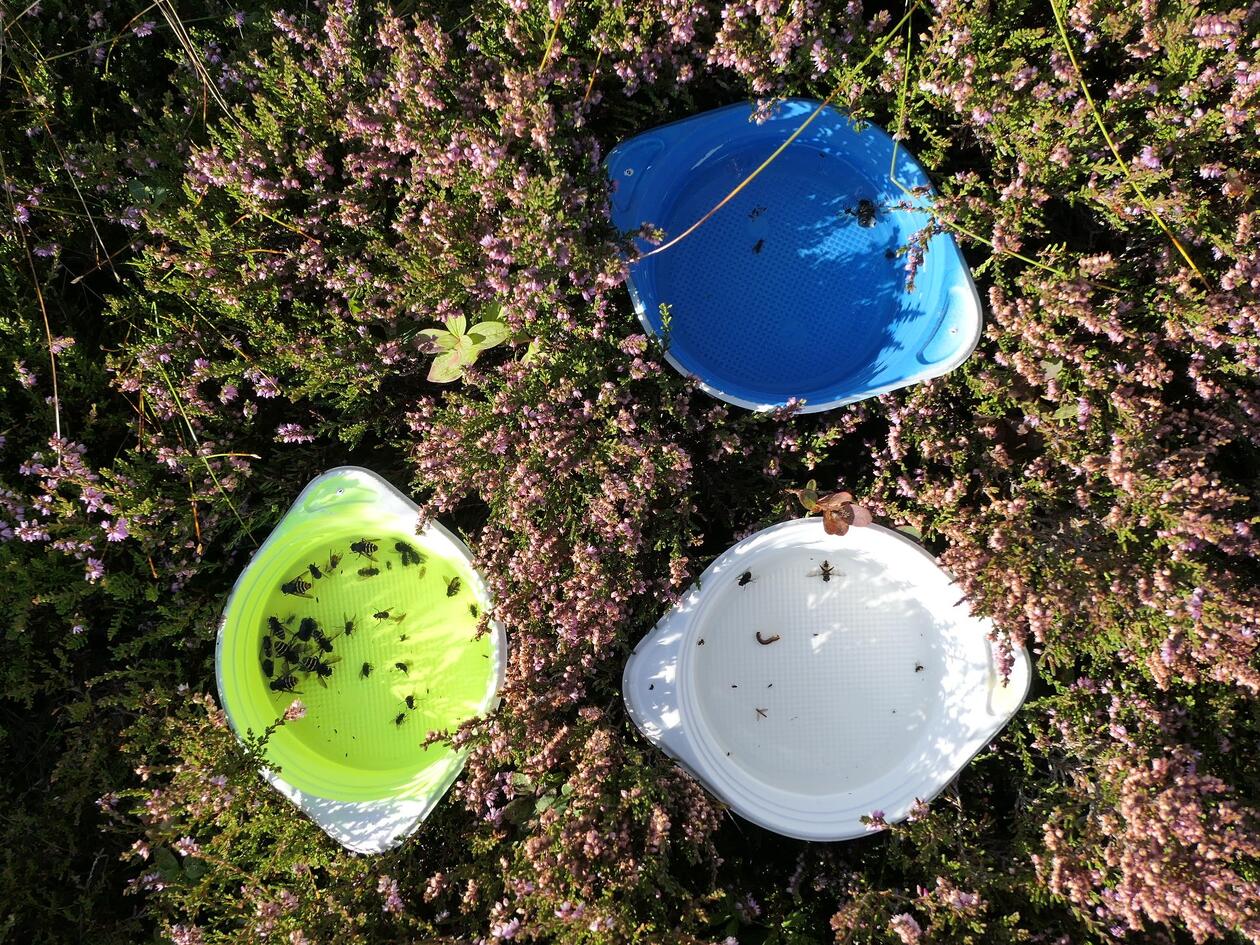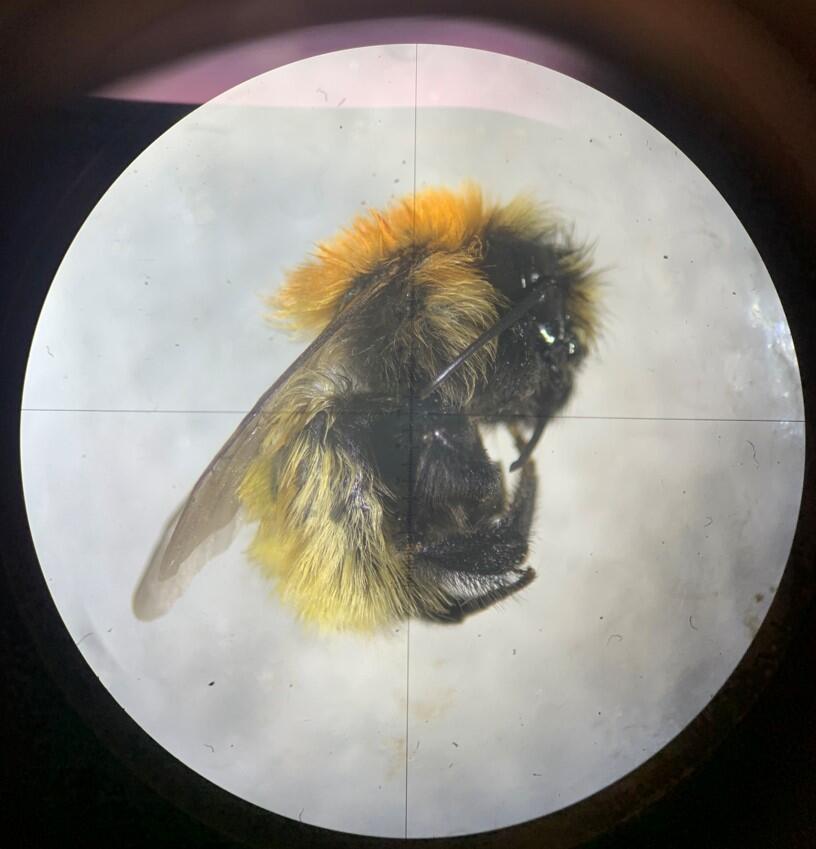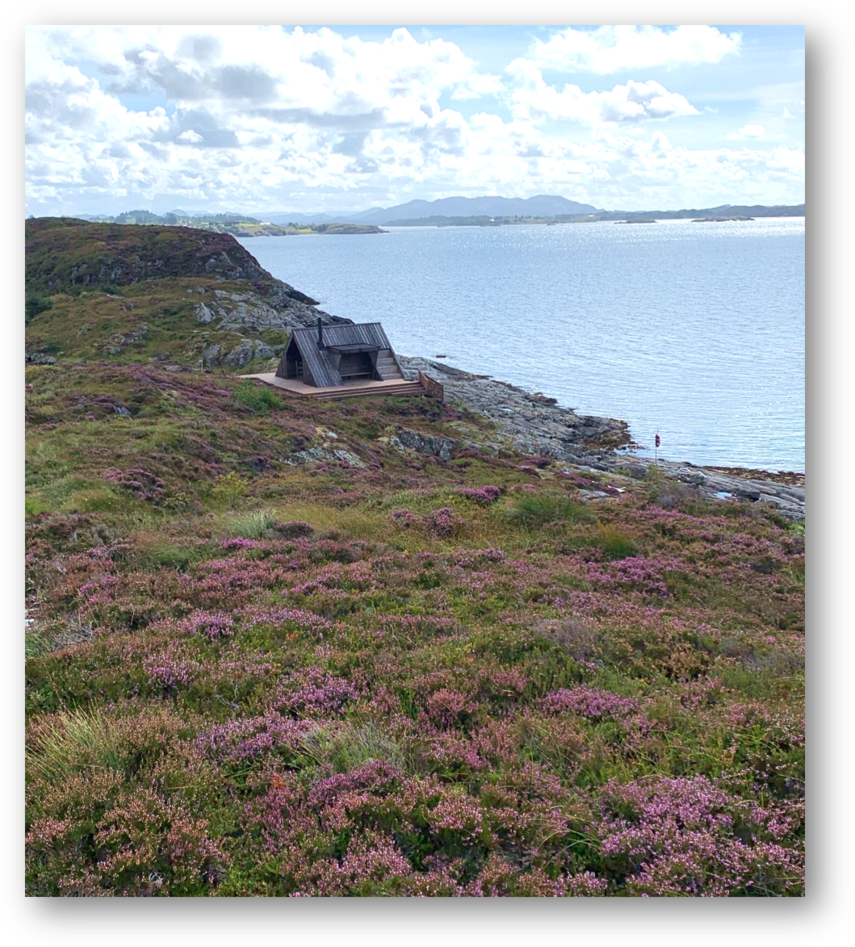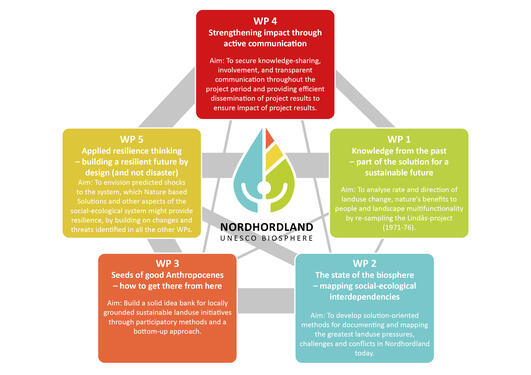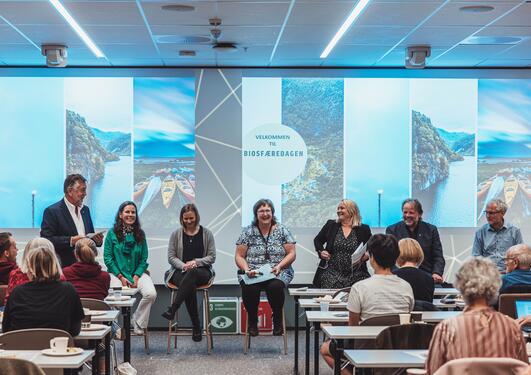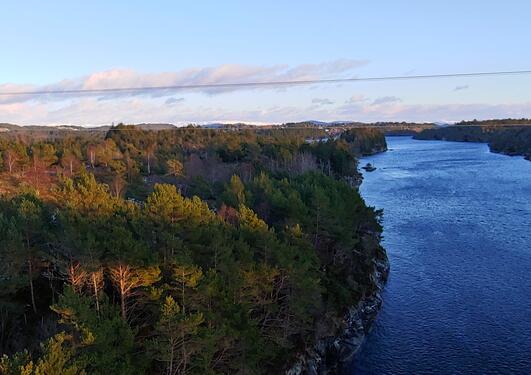Bumblebees in the Coastal Heathlands of Nordhordland UNESCO BR
This June MSc student Susanne Zazzera completed her thesis titled "Bumblebee communities in open and overgrown heathlands in Nordhordland UNESCO Biosphere, Vestland, Norway", which was supervised by UNESCO Chair Inger Måren, NIBIO researcher Bjørn Arild Hatteland, and PhD student Ieva Rozite-Arina. Susanne spent the summer of 2022 in Nordhordland's beautiful coastal heathlands collecting bumblebees. Read about why she did this, and what she learned!

Main content
What did Susanne do?
During the summer of 2022, Susanne collected bumblebees from six coastal heathlands in Nordhordland, all with different management intensities and types, to investigate and compare the bumblebee communities. All sites were sampled during two sampling periods: once in June and once in August. The bumblebees were collected using pan traps and aerial nets, and were later studied and identified using stereo microscopes.
Why bumblebees and coastal heathlands?
Coastal heathlands are one of the oldest types of cultural landscapes in Norway, and Europe in general. This is an ecosystem type that has been greatly reduced by land use changes, and only 10% of Norway's coastal heathlands remain. Coastal heathlands are listed as endangered on the Norwegian Red List.
We know that pollinating insects are declining globally, and habitat loss is a big reason for this. Heathlands are an important habitat for bumblebees, but there are few studies on insects in Norwegian coastal heathlands. As 15% of Norwegian bumblebee species are listed on the Norwegian Red List, it is relevant to study how bumblebee communities respond to decreasing management intensity in heathlands.
Why Nordhordland UNESCO Biosphere Reserve?
Coastal heathlands are found all along the coast of Nordhordland, and are an important part of the region both historically, culturally, and as an ecosystem. UNESCO Biosphere Reserves are model areas of sustainable development, and one of the objectives of the Biosphere Reserves is to conserve biological and cultural diversity. This study increases the knowledge of biological diversity in the region, and enhances the importance of heathlands as a pollinator habitat, and as an ecosystem.
What did Susanne discover?
Susanne found that the species composition of bumblebees varied between open, well managed heathlands, and overgrown, unmanaged heathlands. The overgrown heathlands had a higher abundance of generalist species, meaning bumblebees that can feed on and pollinate a variety of flower species, and are not dependant on the heathland habitat. In the open heathlands however, the specialist bumblebee Bombus muscorum (large carder bee, or kysthumle in Norwegian) was recorded. This is a red listed species in Norway, and is known to be strongly connected to the open coastal heathland landscape. Most individuals of B. muscorum were found on the largest heathland of the study, with the highest management intensity. This indicates the importance of maintaining coastal heathlands, and reducing habitat fragmentation.
Want to read more?
You can download the full thesis and appendices here.
